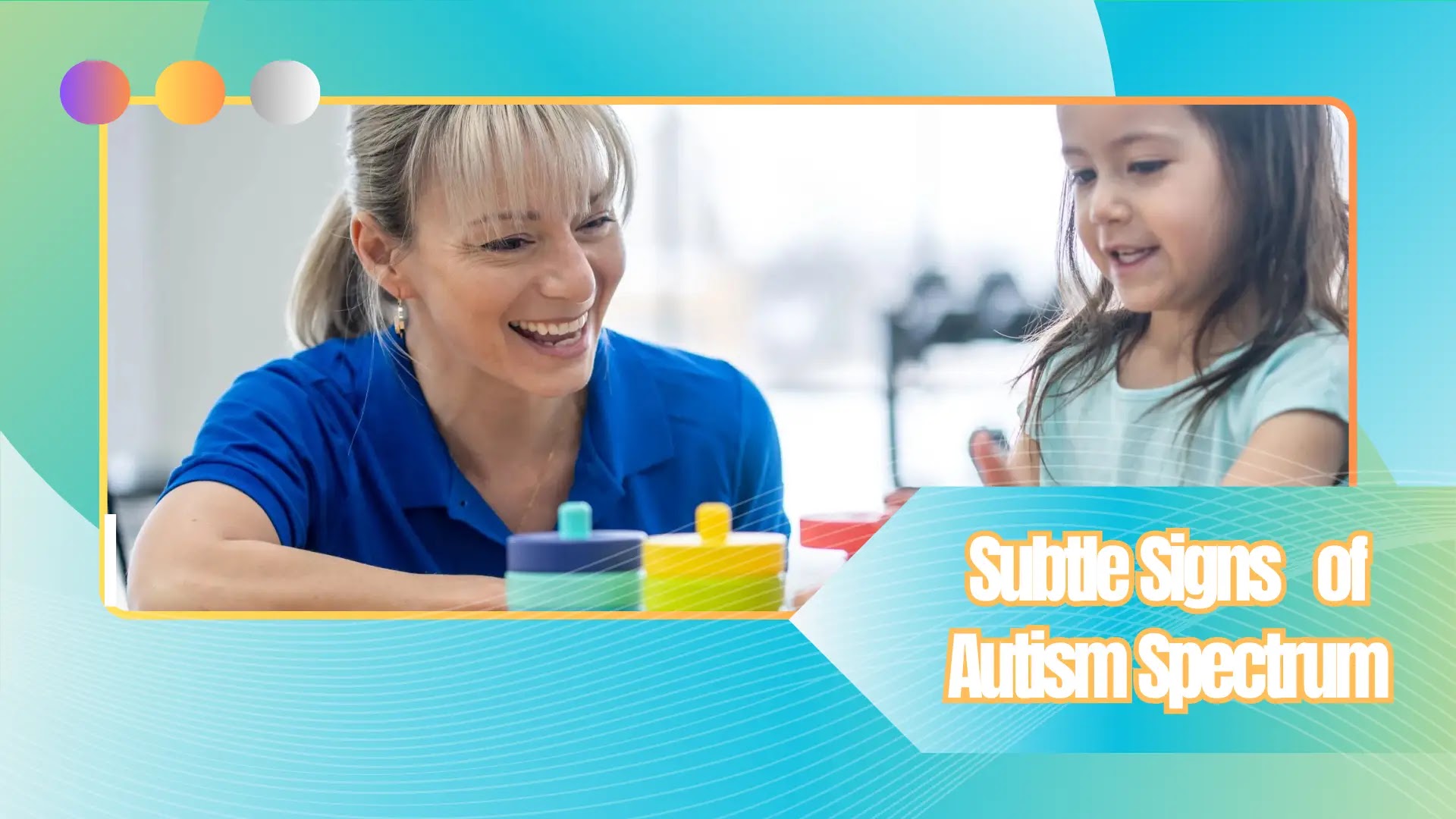9 Subtle Signs Your Child Might Be on the Autism Spectrum
Autism Spectrum Disorder (ASD) affects each child differently, yet many early indicators share common traits. Parents who recognize subtle behavioral patterns can act early—helping their child thrive with timely support. Here are nine clear signals to watch for:
1. Social Disconnect
-
Eye contact avoidance: Your child may consistently avert their gaze or struggle to hold eye contact.
-
Lack of social reciprocity: They might not smile back or respond to social cues—like failing to engage when called their name by around 6–12 months
2. Delayed Communication
-
Late babbling or gestures: Babbling, pointing, or waving should typically begin by 12 months.
-
Speech delays or echolalia: Most children speak single words by 16 months, and two-word phrases by 24 months. Echoing TV lines instead of original speech can be a red flag .
3. Regression in Skills
-
Losing previously acquired skills: If your child once babbled, communicated, or smiled—and then stopped—this regression warrants professional attention ****.
4. Repetitive Behaviors
-
Stimming: Observe repetitive motions like hand-flapping, rocking, or spinning. These self-soothing behaviors often accompany stress or excitement .
5. Rigid Routines & Rituals
-
Unusual distress with change: A child strongly attached to specific routines—such as insisting on eating the same meal or following the same path daily—can be showing signs of ASD .
6. Restricted or Intense Interests
-
Laser-focused hobbies: A child’s obsession with spinning objects, lights, or unusual topics—like an encyclopedic interest in trains—might indicate a pattern common in autism ****.
7. Heightened or Blunted Sensory Reactions
-
Sensory sensitivity: They may be overly bothered by bright lights, loud noises, or certain textures—or show little reaction to pain or temperature .
8. Limited Fake Play
-
No imaginative or pretend play: By 18 months, most children begin playing pretend—like feeding a doll or playing “house.” A lack of imaginative play could signal ASD .
9. Trouble with Shared Attention
-
Ignoring social sharing: A child may fail to follow your gaze or point at an object to share interest—signs of difficulties with “joint attention” seen early in life .
Why Spotting These Signs Early Matters
Early intervention offers immense benefits. Children who receive therapies—such as speech, occupational, or behavioral support—before age 2 tend to make faster progress in communication, social interaction, and emotional regulation .
Experts recommend developmental screenings at 9, 18, and 30 months, with autism-specific assessments at 18 and 24 months. However, trust your instincts—if your “gut” is telling you something feels off, bring it up with your pediatrician.
What to Do If You’re Concerned
-
Track Milestones: Note when your child babbles, gestures, uses words, and shows social engagement.
-
Talk to Your Pediatrician: Share your observations and ask for immediate developmental screening.
-
Move to a Specialist: If flagged, a developmental pediatrician, psychologist, or speech therapist can conduct diagnostic assessments like the M-CHAT, ADOS, or ADI-R .
-
Start Early Intervention: The sooner you begin therapy—like speech or ABA therapy—the better the long‑term outcomes .
Every Child Deserves the Right Start
Autism Spectrum Disorder is a broad and varied condition, and no two children experience it in exactly the same way. Some may show signs very early in life, while others may not exhibit symptoms until later developmental stages. For many families, the journey toward understanding a child’s behavior can be filled with questions, uncertainty, and emotional complexity.
Recognizing the early signs of autism is not about labeling a child—it’s about opening doors to support, education, and opportunity. The earlier a child is assessed, the sooner parents and professionals can begin to understand their unique strengths and challenges. Early diagnosis does not define a child’s future, but it can significantly shape it for the better by connecting families to the resources and interventions that help children grow, communicate, and thrive.
What’s important to remember is that noticing several of the signs outlined above doesn’t mean your child has autism—but it does mean it’s worth starting a conversation with your healthcare provider. Trust your instincts. Parents are often the first to observe subtle shifts or differences in their child's development. Your attentiveness and advocacy can make all the difference.
Support for children on the autism spectrum has evolved immensely in recent years. From speech and occupational therapies to behavioral strategies and inclusive educational environments, a wide range of evidence-based interventions can dramatically improve developmental outcomes. These services are most effective when introduced early, during critical stages of brain development.
Ultimately, autism is not a limitation—it’s a different way of processing and interacting with the world. With compassion, informed care, and timely support, children on the spectrum can achieve remarkable growth. They can build relationships, express themselves, pursue their interests, and contribute meaningfully to their communities. The key is early recognition, followed by proactive, loving support every step of the way.
So, if you're noticing patterns in your child that raise questions or concerns, don’t wait. Seek guidance, get informed, and know that you're not alone. Taking action today can lead to a brighter, more empowered tomorrow for your child and your family.

